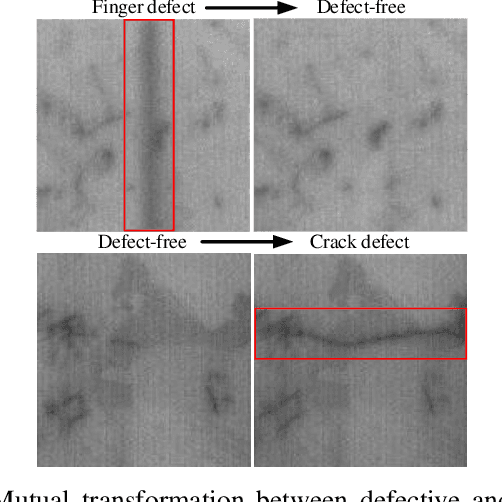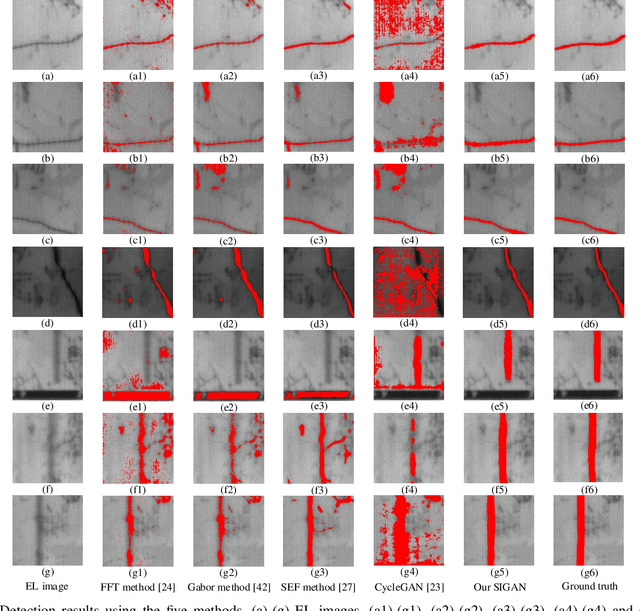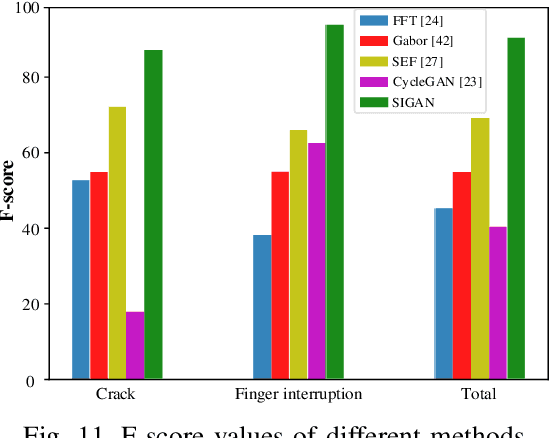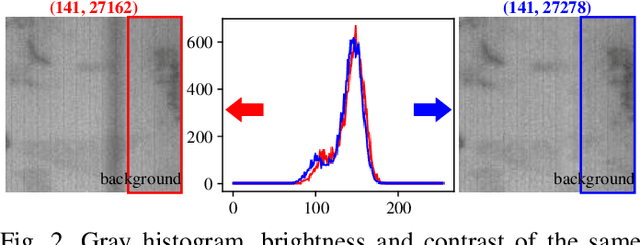SIGAN: A Novel Image Generation Method for Solar Cell Defect Segmentation and Augmentation
Paper and Code
Apr 11, 2021



Solar cell electroluminescence (EL) defect segmentation is an interesting and challenging topic. Many methods have been proposed for EL defect detection, but these methods are still unsatisfactory due to the diversity of the defect and background. In this paper, we provide a new idea of using generative adversarial network (GAN) for defect segmentation. Firstly, the GAN-based method removes the defect region in the input defective image to get a defect-free image, while keeping the background almost unchanged. Then, the subtracted image is obtained by making difference between the defective input image with the generated defect-free image. Finally, the defect region can be segmented through thresholding the subtracted image. To keep the background unchanged before and after image generation, we propose a novel strong identity GAN (SIGAN), which adopts a novel strong identity loss to constraint the background consistency. The SIGAN can be used not only for defect segmentation, but also small-samples defective dataset augmentation. Moreover, we release a new solar cell EL image dataset named as EL-2019, which includes three types of images: crack, finger interruption and defect-free. Experiments on EL-2019 dataset show that the proposed method achieves 90.34% F-score, which outperforms many state-of-the-art methods in terms of solar cell defects segmentation results.
 Add to Chrome
Add to Chrome Add to Firefox
Add to Firefox Add to Edge
Add to Edge